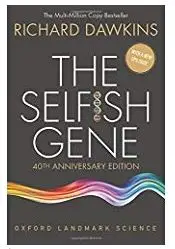|
TRANSLATE THIS ARTICLE
Integral World: Exploring Theories of Everything
An independent forum for a critical discussion of the integral philosophy of Ken Wilber
d  David Christopher Lane, Ph.D.
Professor of Philosophy, Mt. San Antonio College Lecturer in Religious Studies, California State University, Long Beach Author of Exposing Cults: When the Skeptical Mind Confronts the Mystical (New York and London: Garland Publishers, 1994) and The Radhasoami Tradition: A Critical History of Guru Succession (New York and London: Garland Publishers, 1992). David Christopher Lane, Ph.D.
Professor of Philosophy, Mt. San Antonio College Lecturer in Religious Studies, California State University, Long Beach Author of Exposing Cults: When the Skeptical Mind Confronts the Mystical (New York and London: Garland Publishers, 1994) and The Radhasoami Tradition: A Critical History of Guru Succession (New York and London: Garland Publishers, 1992).If there's a singular topic Integral students need to be educated on it is evolutionary theory, given their frequent but uninformed use of the term "evolution". These short biographical chapters about evolutionary theorists have been written by different philosophy students of professor David Christopher Lane. (FV)
THE EVOLUTIONARY SCIENTISTS
Glimpses into the Life and Work of Great Thinkers in Evolutionary Biology
Coyne|
Crick|
Darwin|
Dawkins|
Diamond|
Dobzhansky|
Eldridge|
Gould|
Haldane|
Hamilton |
Lamarck|
Lovelock|
Mayr|
Mendel|
Monod|
Spencer|
Trivers |
Wallace |
Weismann |
Williams |
E.O. Wilson
Richard DawkinsBrandon GillettRichard Dawkins is one of the most famous evolutionary thinkers in the past fifty years. His ideas have radically changed the mainstream view of evolutionary thought. According to his Wikipedia entry, Dawkins was born in British Kenya back in 1941. As a teenager, Dawkins rejected his Christian faith in favor of evolutionary theory. He found that it was a more justified model for the emergence of life. He studied Zoology at Balliol College at Oxford under Nobel Prize-winning ethologist Nikolaas Tinbergen. He graduated in 1962 with second-class honors. Richard Dawkins made three primary contributions to evolutionary theory.  Richard Dawkins In The Selfish Gene, Dawkins explains that evolutionary selection happens at the level of a genetic sequence, rather than on whole organisms. He claims that animals are nothing but survival machines used to carry genes from one generation to the next as they go about the business of reproducing themselves. He rejects the idea of group selection, and directly refutes it in his book. Dawkins claims that all examples of altruism in the natural world result from behavior that directly increases the chances of an organism's genes surviving to the next generation. This explanation requires an understanding that different members of a species may contain exact replicas of the same gene sequence scattered throughout several members of a population. This means that one organism's sacrificial death may still be beneficial to the survival of its genes. A more obvious point in favor of this view is the fact that sometimes the best way to ensure one's own survival is to work cooperatively with other genes in order to benefit oneself. He spends nearly the entire book expanding on this theory until the very end when he introduces the concept of the meme. A meme, according to Dawkins, is a culturally transmitted behavior or thought. The theory says that a meme is subject to the same evolutionary forces which shaped the progression of genetic sequences. In other words, thoughts evolve. Dawkins argues that the essential element of evolution is what he calls a replicator. Anything that reproduces copies of itself is subject to evolution as long as those copies have some probability of accumulating minor alterations over time. Thoughts reproduce themselves in human minds through language, imitating behavior, repeating information inside one's head, and encountering circumstances which naturally produce similar thoughts within many different individuals. As these thoughts are transmitted from one person to another, they may be slightly altered through a number of different means. Perhaps someone hears your words wrong. Maybe our imperfect memory causes the thought to be recalled incorrectly. Maybe a certain concept is similar to another closely related concept and the two get mixed up. Whatever the reason for these alterations, we can see that memes are subject to mutation. From here, the reasoning is identical to that of classical evolution. The mutations which provide a higher probability for the object of evolution to continue existing, and reproducing effectively, will occur more frequently in their environment. As their offspring appear more frequently, mutations arise and some of those mutations will be more fit for survival than others. As these alterations continue to accumulate over time, a meme which started as one thing can evolve into an entirely new concept, or branch off into multiple alternate versions of itself. Each of those versions would then evolve further and so forth. The third significant contribution Richard Dawkins gave us is the idea of the extended phenotype. Dawkins articulates the idea that phenotypes are not simply limited to a gene's effect on the organism's body, but also includes any effect on the world around it. Just as how the presence of some gene in an animal might have effects on its eye color, the presence of some different gene within an animal might alter the characteristics of the external environment. Dawkins uses the example of a beaver to explain his point. Beavers have a natural tendency to produce dams in their environment. This, like everything else the beaver does, is controlled by his genetic code. The presence of specific genes within the beaver compel him to build dams of a certain height, width, location, etc. This means that variances in a beaver's tendency to build his dam one way instead of another is equivalent to the tendency for an organism to have blue eyes instead of brown. As Dawkins puts it, "Whatever its benefits, a beaver lake is a conspicuous and characteristic feature of the landscape. It is a phenotype, no less than a beaver's teeth and tail, and it has evolved under the influence of Darwinian selection." The structure of a beaver's dam is a phenotypic effect. Dawkins doesn't stop at beavers though. He applies his concept of the extended phenotype to any alterations that a gene has on the world. This even includes a gene's effect on the bodies of other organisms. For example, some parasites which take advantage of a snail's shell for their own survival display extended phenotypic effects. These parasites will actually make the snail's shell harder and more secure which increases the safety of the parasite. Dawkins claims that these parasites were evolutionarily selected for their phenotypic effect of hardening the shell of their host. Richard Dawkins ideas have a number of criticisms raised against them. Group selection proponent's claim that Dawkins's ideas are paradoxical in respect to the selfish gene. They say that if genes were the primary object of evolution, we would expect to find little to no altruistic or cooperative behavior among individuals of a species. Claims against his theory of meme evolution claim that it lacks evidence. It would be nearly impossible to prove meme evolution because it would require a controlled environment for similar thought patterns to be pitted against each other and allowed to evolve over the population freely. Criticisms of the extended phenotype theory claim that Dawkins is reinterpreting the meaning of the word phenotype in order to support his theory, and that he gives no evidence of genetic origin for the examples he provides. You can make up your own mind about Dawkins's ideas by reading his original material. He has written a book for each of his three theories, The Selfish Gene and The Extended Phenotype each cover the theories for which they are named. To hear more of what Dawkins has to say about meme theory, you can read the book by Susan Blackmore entitled The Meme Machine. Further Reading1. The Selfish Gene ,Oxford University Press, 1976. 2. The Blind Watchmaker: Why the Evidence of Evolution Reveals a Universe without Design, Norton & Company, Inc, 1986. 3. Climbing Mount Improbable, Norton, 1996.    MSAC Philosophy Group
The theory of evolution has a long history. However, it was not until Charles Darwin and Alfred Russel Wallace discovered that the wide variety of species we presently see were largely the result of natural selection did evolutionary studies have a solid, scientific basis. In the past one hundred and sixty years, a number of eminent biologists have contributed to our understanding of how complex life forms emerged from simpler, more rudimentary ones.
Comment Form is loading comments...
|